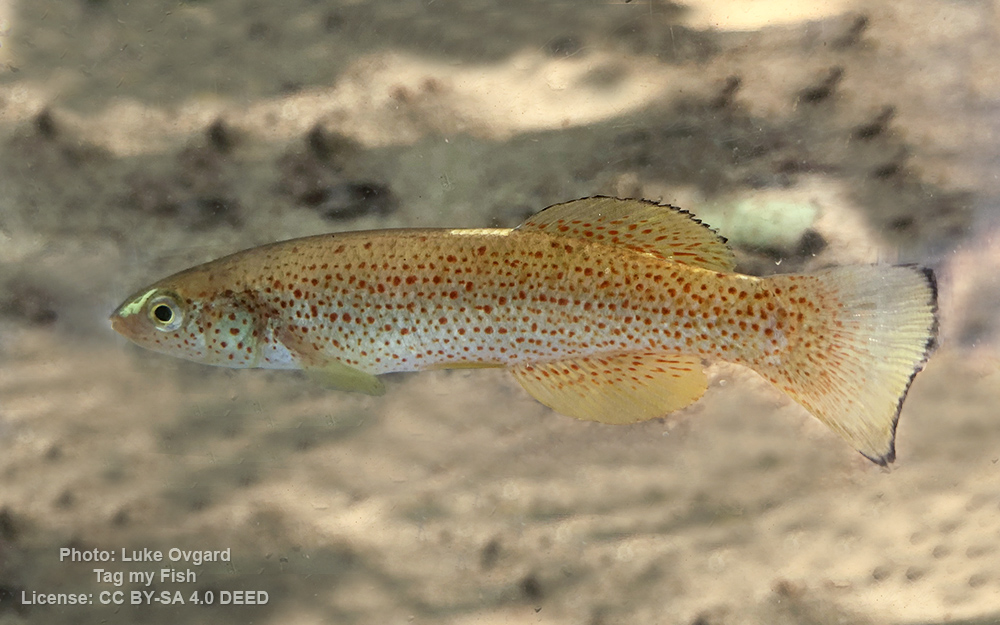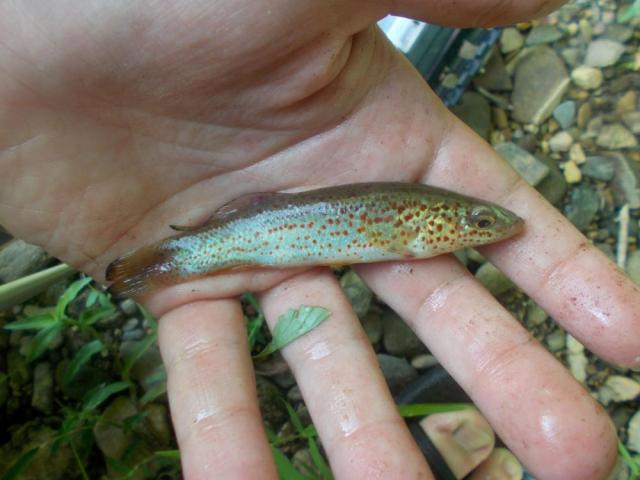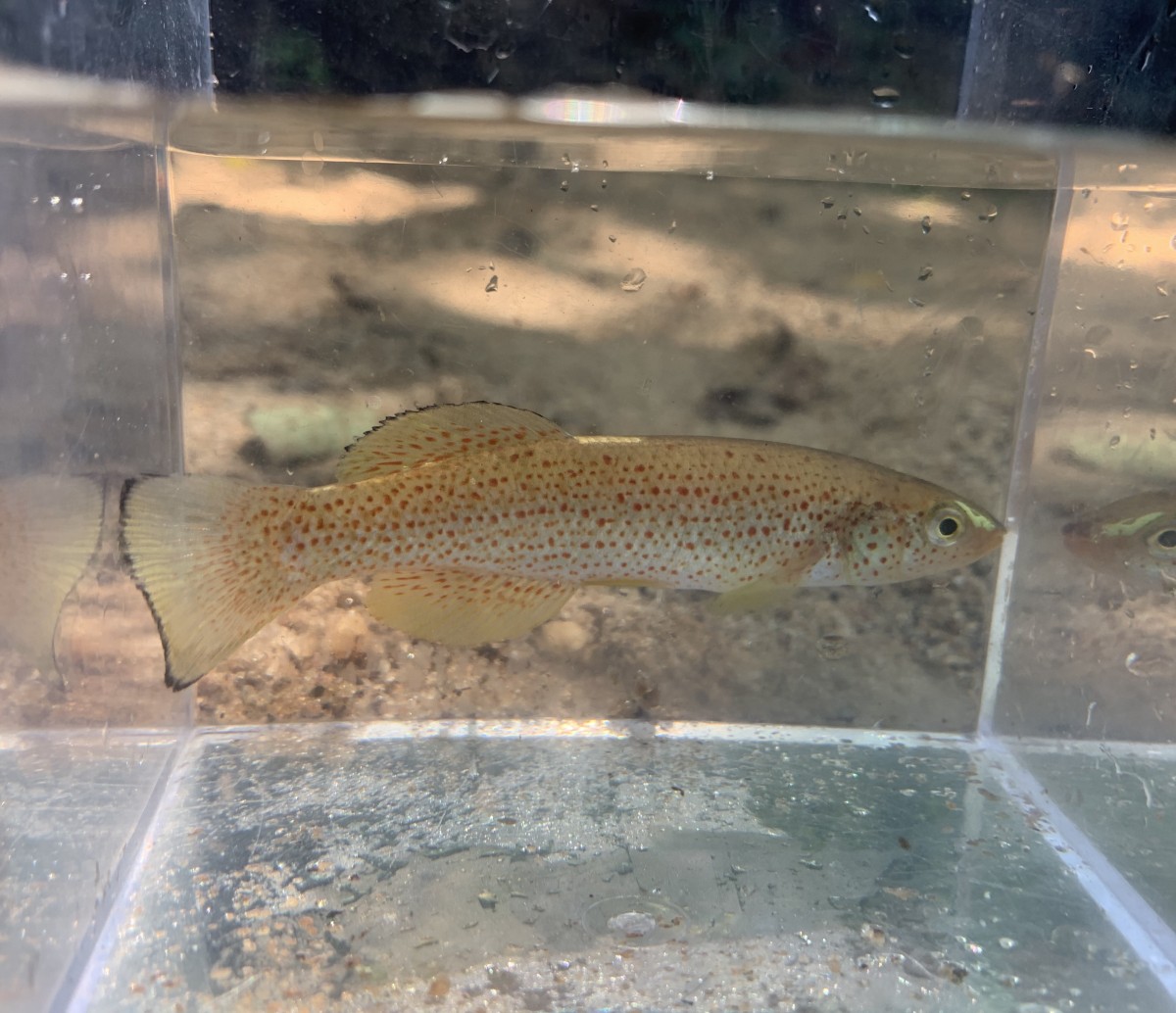Southern studfish
(Fundulus stellifer)

Image source: Luke Ovgard | Tag my Fish
Classification
General data
The southern studfish (Fundulus stellifer) is a ray-finned fish of the family Fundulidae, the tooth carps, that is native to the southeastern United States.
The southern studfish is 2.2 to 3.9 inches (5.6 to 9.9 cm) long. The male has elongated posterior dorsal fin rays that may extend to the base of the caudal fin.
The dorsal fin in both sexes begins almost directly above the anal fin, with 12–13 rays present in each.
The coloration of the breeding male is striking, with distinct orange spots irregularly speckling the entire body and extending to the head and fin bases. The body color may be iridescent blue, with gold appearance in the vicinity of the opercula. A variable black margin may be present on the pale dorsal and caudal fins, and they, with the anal, also bear orange spots.
The female has rows of irregular olive-colored spots that are smaller than the orange spots of the breeding male. The fins in the female are olive, rather than pale orange.
The southern studfish has its historical distribution in the upland tributaries of the Alabama River in Alabama (except the Tallapoosa River system); in northern Georgia, in a few of the headwater tributaries of the Chattahoochee River; in the upper Chattahoochee River drainages in northern Alabama and southeastern Tennessee; and the Tennessee and Cumberland River drainages in eastern Tennessee.
Currently, the studfish still occupies all the historical distribution areas and seems to be holding a sustainable population in comparison to the northern studfish (Fundulus catenatus), which is seemingly being replaced in these areas. The decrease in some small areas, although not significant, as in Alabama, and the failure to collect additional specimens from previous samples may indicate this species has been extirpated from the Cahaba River system. The southern studfish is also thought to be replaced in the Tallapoosa River system by the stippled studfish (Fundulus bifax). The cause of this decline is the increase in road runoff into these waterways and competition for food and breeding areas.














